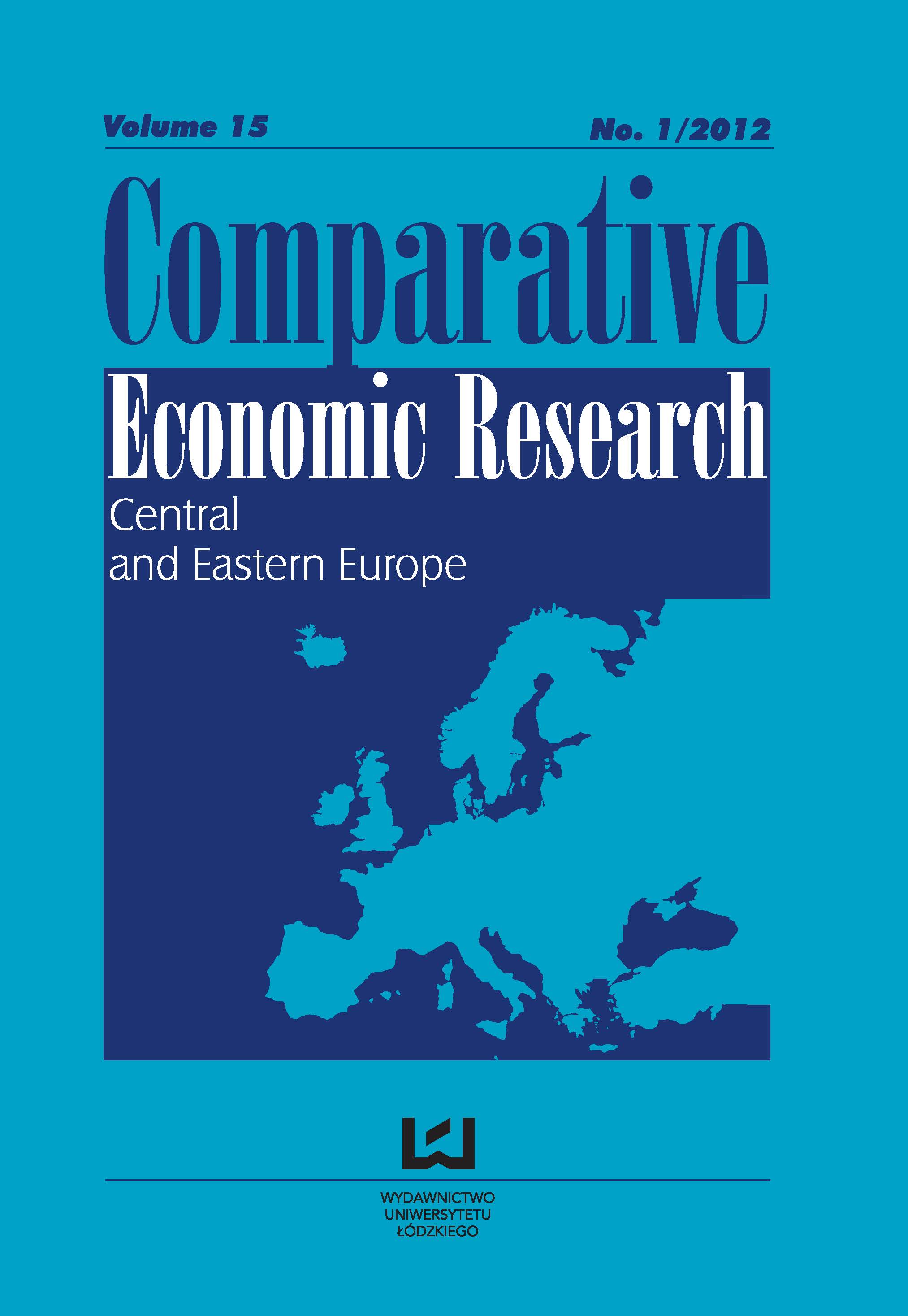The Role of Older People as Consumers - the Comparative Analysis of Old and New Member States of European Union
DOI:
https://doi.org/10.2478/v10103-012-0005-yAbstract
The aim of this paper is to investigate differences between the role of older people as consumers of goods and services in Old and New Member States of European Union. An ageing of society process causes changes in the structure of consumers of goods and services, in size and age respectively and therefore should be comprehensively considered. The consequences of an ageing process have been illustrated with an example of the tourism market. To reach the goal of this paper statistical analysis has been carried out, particularly in order to examine the differences between EU New and Old Member States2 with respect to dynamics of population ageing and characteristics of older customers. Most of the recent scientific literature considering the specific influence of demographic processes on customers behaviour has been reviewed. The key findings prove that an ageing of societies process is significant for each European country. However EU-12 societies are generally younger in comparison to EU-15. On the other hand EU-12 societies are exposed to higher risk of rising dynamics of demographic changes. In a consequence, the increasing role of older people as customers brings also essential changes in relation between supply and demand on each markets. What is highly important, older customers needs are evolving due to their increasing purchasing power, higher education level and better consumers awareness. For instance, these relationships can be observed on tourism services markets where older people are becoming a significant and more attractive group of consumers, due to the level of their tourism expenditures. Moreover, the study described clearly considerable differences between older customers behaviour in EU Old and New Member States: in the purchase frequency of tourism services, in the length of holiday trips and in the level of expenditures. In the subsequent years, a higher homogenisation of purchasing habits of older people in European countries is expected. This paper contributes to the most current European scientific discussions on an importance of older people for a development of economies from the perspective of their impact on goods and services markets. Furthermore, especially in a context of insufficient optimization of companies strategies, which are still directed to a shrinking group of young buyers and the lack of knowledge about changing needs of older customers need to be highlighted and analyzed to bring new solutions for producers, retailers and whole markets.
Downloads
References
Active ageing and solidarity between generations. A statistical portrait of the European Union 2012 (2011), Population and social conditions, Eurostat statistical books, European Commission, Luxembourg
Google Scholar
Bonsang E., van Soest A. (2010), Satisfaction with job and income among older individuals across European countries, ‘METEOR’, Maastricht University School of Business and Economics, Maastricht Research School of Economics of Technology and Organization, Maastricht, RM/10/059
Google Scholar
CSO (2011), Central Statistical Office in Poland, www.stat.gov.pl
Google Scholar
Demography Report 2010. Older, more numerous and diverse Europeans (2011), European Commission, Directorate-General for Employment, Social Affairs and Inclusion, Eurostat, Luxembourg
Google Scholar
Eurostat (2011), The statistical Office of the European Union, http://epp.eurostat.ec.europa.eu
Google Scholar
Green Paper (2005), ‘Confronting demographic change: a new solidarity between the generations’, Communication from the Commission, COM/2005/0094 final
Google Scholar
Income and living conditions in Europe (2010), A. B. Atkinson, E. Marlier (eds.), European Communities, Eurostat, Luxembourg
Google Scholar
Intergenerational solidarity. Analytical report (2009), Flash Eurobarometer – The Gallup Organisation, European Commission, Directorate-General for Employment, Social Affairs and Inclusion, Eurostat, Luxembourg
Google Scholar
Kurkiewicz J. (1992), Podstawowe metody analizy demograficznej, PWN, Warszawa
Google Scholar
Myrskylä M., Kohler H-P, Billari F.C. (2009), Advances in development reverse fertility declines, ‘Nature’, London, 460
Google Scholar
Puente A. (2005), The European consumer in the enlarge Union, ‘Statistics in focus. Population and social conditions’, European Communities, Eurostat, Luxembourg, 2/2005
Google Scholar
Rosset E. (1959), Proces starzenia się ludności, Polskie Wydawnictwo Gospodarcze, Warszawa
Google Scholar
Styś M. (2006), Konsument bez metryki, ‘Marketing w Praktyce’, Warszawa, 6/2006
Google Scholar
Downloads
Published
How to Cite
Issue
Section
License

This work is licensed under a Creative Commons Attribution-NonCommercial-NoDerivatives 4.0 International License.











